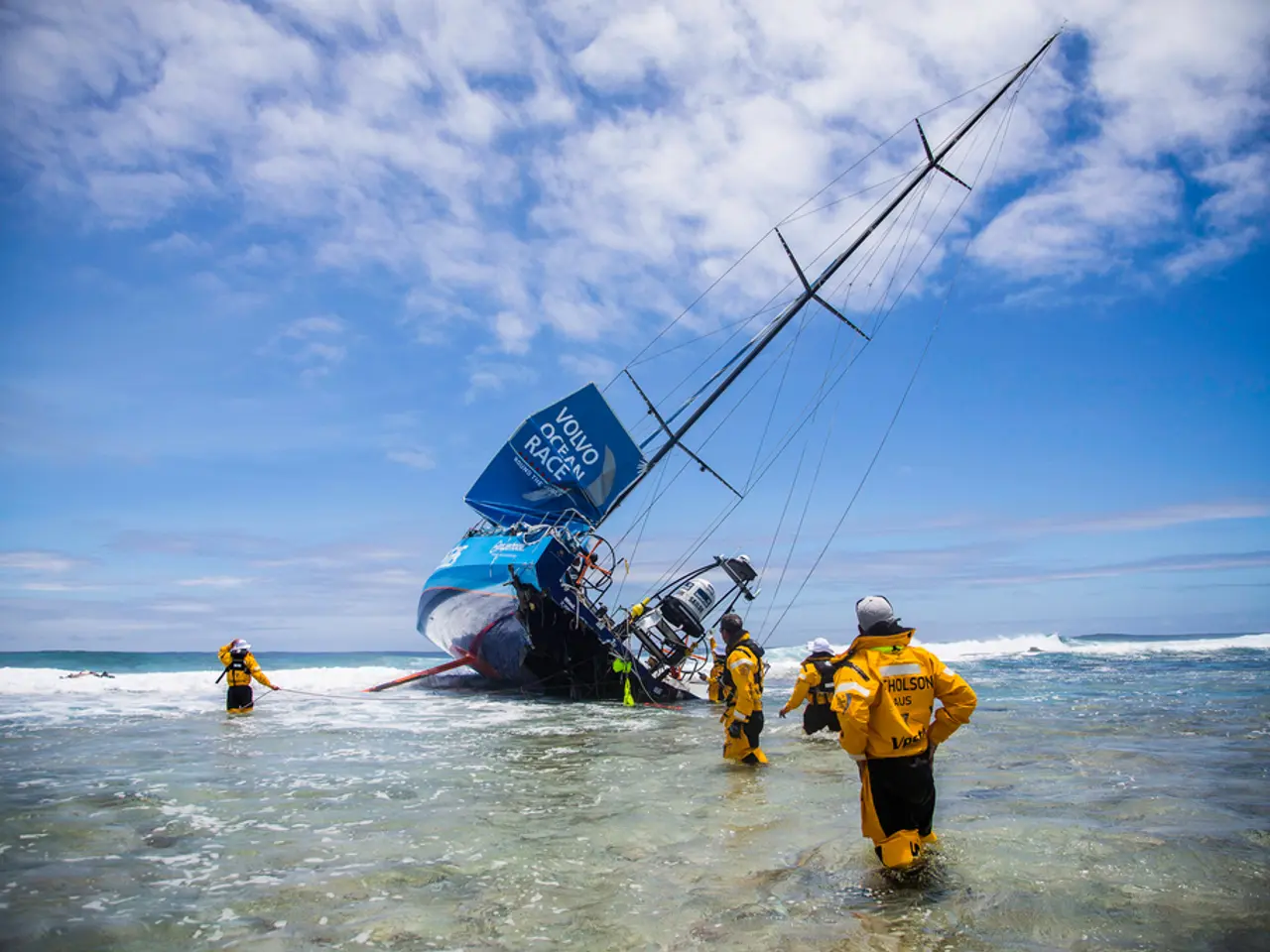Swift reduction in drowning rates remains elusive
On World Drowning Prevention Day 2025, a united call was made by the Department of Maternal and Child Affairs, World Health Organization (WHO), and the Campaign for Tobacco-Free Kids (CTFK) to escalate actions to safeguard children from drowning. This call comes as Vietnam grapples with a significant number of child drowning deaths, with 4,019 recorded in the same year, accounting for 40% of the total deaths involving children under the age of 14.
Drowning remains a leading cause of death among children aged 5 to 14 in Vietnam. The Vietnamese Government, in collaboration with partners like WHO and CTFK, is taking comprehensive steps to address this issue.
Key strategies include the development of national programs and goals, such as the Child Accident and Injury Prevention Program (2021-2030) and a new program on drowning prevention education for 2025-2035. These programs aim to equip 70% of students by 2030, and 90% by 2035, with drowning prevention knowledge and skills. They also target increasing school swimming pool availability, with the goal of having 30% of primary schools and 70% of communes equipped with pools by 2035, along with certified swimming teachers in schools.
Swimming and water safety education is another crucial component of these efforts. Over 52,000 children aged 6-15 in 10 provinces have already been trained in safe swimming and water safety skills through programs implemented since 2017. These programs include training for instructors, parents, caregivers, and teachers to build community capacity for child drowning prevention.
Multisectoral collaboration and awareness campaigns are also essential. The Ministry of Health (MOH) urges provincial governments, schools, and communities to prioritize drowning prevention with enhanced communication, investments, and scale-up of proven interventions, particularly in high-risk rural areas with many water bodies. Collaboration with international partners such as WHO and Bloomberg Philanthropies supports these efforts.
The efforts aim to reduce child drowning deaths by 10% by 2025 and 20% by 2030 through improved education, skill-building, and community safety measures. However, despite these measures, drowning rates in children remain a serious concern, with about 2,000 child drownings reported annually, indicating ongoing challenges and the need to intensify prevention actions, especially in rural and remote areas.
Dr. Angela Pratt, WHO representative in Vietnam, emphasized that every death to drowning is one too many and that there is strong evidence about what works to prevent drowning. WHO has supported the government in policy development and the implementation of the National Programme for the Prevention and Control of Child Injury for 2021-2030 and the Multisectoral Collaboration Plan on Child Drowning Prevention for 2022-2030.
It's important to note that globally, around 300,000 annual drowning deaths were reported in 2021, with 57% involving children and young people, and 92% occurring in low- and middle-income countries. WHO's recommendations for preventing drowning include multisectoral collaboration, strengthening public awareness of drowning, establishing a national drowning prevention plan, and collecting data.
In conclusion, Vietnam’s comprehensive drowning prevention strategies centre on life skills education, swimming instruction, community engagement, facility development, and multisectoral cooperation with clear targets set through 2035 to substantially reduce drowning risks among children under 14. It's a collective responsibility to ensure the safety of our children, and every effort counts in the fight against child drowning.
- Science and technology advancements can play a significant role in developing new therapies and treatments for chronic diseases, such as cancer and respiratory conditions.
- Good mental health is crucial for overall well-being and can be improved through fitness and exercise, sexual health education, and nutrition.
- Proper skin care is essential for maintaining eye health and preventing skin conditions.
- Autoimmune disorders like rheumatoid arthritis and lupus are complex medical conditions that require extensive treatment and management.
- In the realm of environmental science, climate change has severe implications for our planet and all living beings, including increased risks for cardiovascular health.
- The manufacturing industry should prioritize workplace wellness initiatives to combat mental health issues and create a more inclusive and supportive environment for employees.
- Aging comes with unique medical challenges, such as digestive health issues and hearing loss, which require tailored solutions for better quality of life.
- The government should invest in public transit to ensure access to healthcare services for individuals with neurological disorders, such as Parkinson's disease or Alzheimer's.
- Mental health issues, such as anxiety and depression, are common among young people who face pressure from academics, work, and social life.
- Men's health needs greater attention, particularly when it comes to prostate cancer, cardiovascular health, and suicide prevention.
- As environmental science continues to advance, understanding the connection between climate change and the spread of infectious diseases is crucial for global health and wellness.
- In the retail sector, businesses can play a key role in promoting health and wellness by encouraging healthy food options, supporting sustainable practices, and offering wellness-focused products.
- financing is vital for the development of new therapies and treatments for various medical conditions, including autoimmune disorders, neurological disorders, and cancer.
- The finance industry should invest in clean energy sources, such as wind and solar, to combat climate change and promote a sustainable future for global health.
- The transportation industry plays a significant role in reducing greenhouse gas emissions, which is crucial for mitigating the effects of climate change on cardiovascular health and aging.
- Effective leadership is essential in promoting diversity and inclusion in the workplace, particularly in sectors like automotive and small businesses.
- Venture capital investment in healthcare and wellness-focused startups can lead to groundbreaking innovations, improving health outcomes and global sustainability.
- Investing in personal finance education can help individuals make informed decisions about their health, including managing weight and health insurance coverage.
- The banking and insurance sectors have a critical role in supporting small businesses, enabling them to implement wellness and sustainability initiatives.
- The fintech industry is revolutionizing the way people manage their personal finances, making it easier for individuals to make healthy financial decisions.
- Real estate developments should prioritize sustainability and accessibility to facilities and amenities that promote health and wellness, such as parks, gyms, and public transit stops.
- Understanding the volatility of the stock market and making informed investment decisions is essential for managing personal finances and achieving long-term financial wellness.
- Private equity investments can drive innovation in various industries, including healthcare, clean energy, and sustainable agriculture, contributing to global wellness and combating climate change.
- Aviation plays a significant role in transporting essential goods, including medical supplies and vaccines, to remote and underserved areas for the betterment of public health.
- Career opportunities in the healthcare industry, such as nursing, pharmacy, and medical research, are essential for improving healthcare outcomes and promoting global health.
- Entrepreneurship in the health and wellness sector offers exciting opportunities to create innovative solutions that address a vast range of health issues, from cancer to mental health and aging.
- In collaboration with educational institutions, the parenting community can empower children with essential life skills, including emotional intelligence, critical thinking, and personal responsibility, instilling a culture of wellness and sustainability for future generations.








